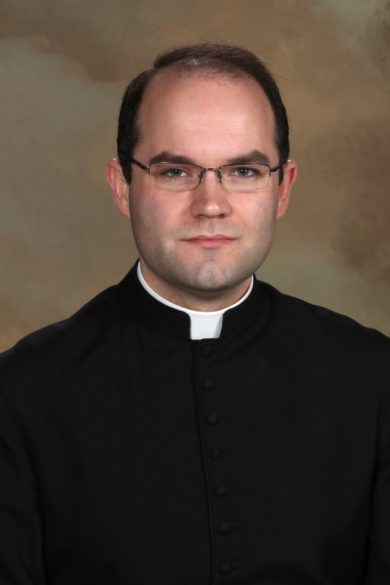Spirit and truth
By Father Aaron Williams
The liturgical celebration of Good Friday is one with a very interesting history. I remember being told when I was younger that the simplicity of the Good Friday service was a window into how the Mass looked on any day in the ancient church. But, a careful study of history shows a much more interesting story.

As far back as St. Ambrose and St. Augustine, we have records which show that the ancient church used to not celebrate any liturgy on Good Friday at all. Instead, a single liturgy was offered beginning at sundown on Holy Saturday and lasting until dawn, and within this one celebration was marked both the Passion and the Resurrection of Christ (interestingly enough denoted by a shift in vestment color during the service from violet to white). I will address the matter of the Holy Saturday Mass in a future column, but suffice it to say that there was no Good Friday service early in the church because the entire mystery was celebrated in a single service on Saturday night.
By the end of the fifth century, you see a movement to begin offering a service on Good Friday, but with an emphasis on this service not being a Mass. Instead, it was designed as a service of scripture readings and psalms which concluded with the adoration of a cross. Eventually by around the seventh century, it became common for a particle of the Sacred Host from the night before to be reserved and received by the Priest alone at the Good Friday service. The particle would be received with unconsecrated wine to further underscore that what was happening was not a Mass.
The medieval church gave this service the title “Mass of the Pre-Sanctified,” which was a borrowed title from the Eastern Church which celebrates all through Lent the “Liturgy of the Pre-Sanctified Gifts,” which is essentially a Mass without a consecration where the priest receives communion from the reserved Sacrament.
The structure of this service was as follows. The priest entered wearing a black mourning chasuble. Interestingly enough, the deacons also wore chasubles for this service, but with a deacon stole. The priest and ministers prostrated themselves in silence and then, after saying a prayer, were seated for the reading of lessons. At the time of the Gospel, the deacon would remove his chasuble and read the Passion narrative from St. John wearing only a stole. When this was finished, the priest would change into black cope and go to the altar where he offered the solemn intercessions — similar to the intercessions in today’s Good Friday liturgy where each intercession is preceded by a period of kneeling for silent prayer. When this is completed, he changed back into chasuble and the cross is brought forward and adored. Afterwards, the priest and deacon went to the Sepulchre — the altar of repose from the previous night — and with solemn festival, the ministers brought the Sacrament back into the church to be placed on the altar. Incense was used and bells were rung as a prelude to the Resurrection. The priest incensed the Sacrament and the altar while kneeling. Then, plain wine was poured into his chalice and he received the Host with the plain wine. Afterwards all departed.
This service remained essentially unchanged until 1955 when the reforms of Pope Pius XII were instituted. At this point, a rubric was given that enough hosts were to be consecrated the night before so that the faithful may receive communion on Good Friday as well. The name of the service was changed to “The Solemn Liturgical Action of the Preparation Day” — a reference to the Jewish term for Friday as a preparation for the Sabbath. The structure of the service remained similar, but the procession with incense was omitted and the deacons wore black dalmatics. The Passion Reading was also shortened to remove the Last Supper, and the burial of Christ.
The Roman Missal of 1970 left the liturgy of Good Friday essentially untouched from its 1955 form. The only changes were aesthetic: the ministers wear red instead of black vestments, and the liturgy is now called “The Solemn Commemoration of the Lord’s Passion.”
What we can learn from this history is that the church, for centuries, has been intentional about making the Good Friday service simple and lacking any sort of ornamentation or “bells and whistles.” The rubrics in the Missal denote that the use of instruments is forbidden on Good Friday, and that all singing is to be done a cappella. The use of simple songs with refrains are much preferred to more difficult works or ‘solo-pieces.’ The liturgy should be intentionally stark — to underscore the emptiness the church feels at the death of Christ, reminding us of the separation we had from God due to original sin.
Parishes should try to avoid any sort of emotionalism. A lot of places today like to turn Good Friday into a praise and worship concert with light effects and loud music, but this doesn’t do justice to the church’s vision for Good Friday. We are meant to feel the difference between what happens on Good Friday and what normally happens at Mass. Here, simplicity is key. The more elaborate ideas can be left for Easter.
(Father Aaron Williams is the administrator at St. Joseph Parish in Greenville)
